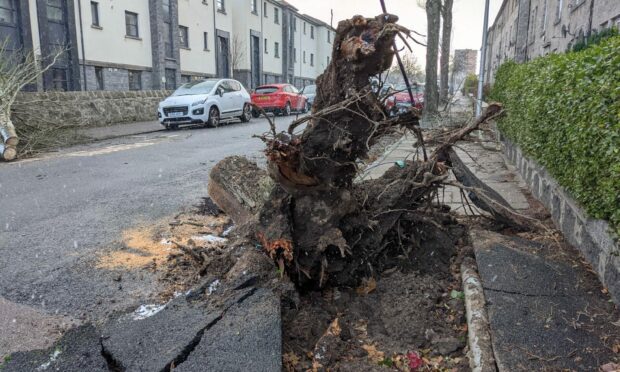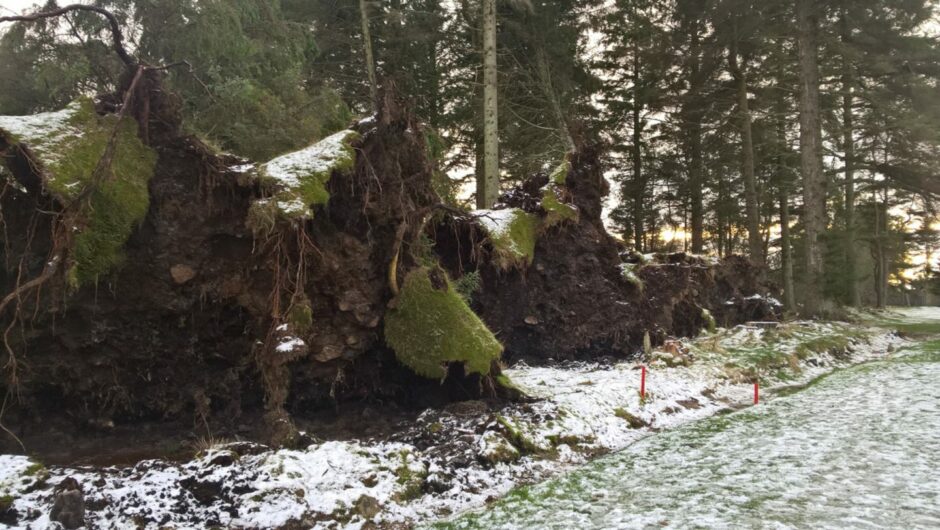The scale of damage caused by recent storms in Aberdeen has been laid bare as a new report shows only 25% of incidents have been cleared.
More than 350 calls from members of the public were made to the local authority following Storm Arwen alone.
The number increased to 477 following storms Malik and Corrie.
And so far 75% remains untouched.
Members of the Public Protection Committee will meet tomorrow to discuss a report on the local authority’s response to the storms and the ongoing recovery process.
They will also look at actions they can take should any similar extreme weather events occur in the future.
Storm Arwen hit the north-east on Friday, November 26 and left thousands of residents across the region without power for days.
In the first 12 hours after the storm Scottish and Southern Electricity Networks (SSEN) said two years’ worth of faults across Grampian had been reported.
While power shortages in the city were resolved within 48 hours many homes in Aberdeenshire had to go without power, mobile signal and even water for up to a week later.
A “significant” amount of damage was done to trees in the city following the storms while one woman was killed by a fallen tree on Aberdeen’s Deveron Road.
The local authority said it is currently focusing its efforts on clearing trees deemed to be “dangerous” and includes those with hanging branches, large splits, or moving roots.
Any that are still blocking access routes such as roads and paths will also be removed.
The recovery process has led to emergency work and Dutch Elm treatment being “severely affected” and it could take up to 12 months to clean up.
Aberdeen tree stock ‘could take years to recover’ from storm damage
Council chiefs added it could “take years” for Aberdeen’s tree stock to recover.
A total of 13,386 calls were made to the Regional Communication Centre (RCC) after Storm Arwen hit from residents in Aberdeen City, Aberdeenshire and Moray.
Aberdeen City Council has said improving the RCC is a “priority” for the year ahead with a focus on providing more capacity for calls during major events.
The local authority will also work on developing a plan that will enable response and recovery work to be provided during any future power cuts in the city.
Meanwhile, a Persons at Risk Database (PARD) will also be established to enable the council to identify and provide support to vulnerable residents who may be at risk during future storms or floods.

